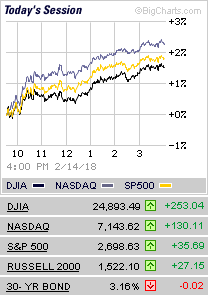WRITTEN BY GREG BOOTS
The S&P 500 index is having a fabulous year. Through the end of September, the index, which tracks top American stocks, had risen 16.4%–making it the top-performing asset class.
It’s the kind of performance that can make you want to push the majority of your investment capital into a single kind of investment. But committing to any one asset class or stock is usually a big mistake, especially over the long run. Over the past decade, the S&P 500 has returned an average each year of just 2.9%. The only asset class that performed worse over that time period was cash, according to an analysis by JPMorgan Asset Management.
The fact is that asset classes bounce around like yoyos from year to year. The chart below bears that out. From small-cap stocks, (tracked by the Russell 2000 index), to foreign stocks (tracked by the MSCI EAFE index) to investment-grade bonds (tracked by the Barclays Capital Aggregate Bond Index), year-to-year volatility reigns.
What’s the antidote to volatility? The data make it clear: Investing in a balanced mix of asset classes. In the chart below, the “Asset Allocation” category (the grey boxes) describes a mix of investments from nine indexes representing diverse asset classes and sectors. Over the past decade, the asset-allocation category has turned in a cumulative 10-year return of 82.8%–better than seven other asset classes.
It’s true that if you’d had a crystal ball a decade ago, you could have invested exclusively in the top-two performing asset classes over that period: foreign stocks from emerging countries and REITS (real estate investment trusts). But you don’t have a crystal ball and neither does any investment advisor. Even hedge fund geniuses have, by and large, a history of feast-and-famine performance.
And of course, loading up on a sector or two could result in very different results. Bets on commodities and large-cap domestic stocks 10 years ago would have led not to losses, but to results that badly trailed those of a balanced portfolio.
In the end, responsible investing isn’t just about picking the biggest winners, it’s also about removing risk from your investment portfolio. That’s why you shouldn’t be concerned about losing a performance contest to one index or another in a given year.
It’s always best to think long-term. A safer mix of investments will, over time, give you the opportunity to reap good, solid gains. At least as importantly, a balanced approach can help protect your portfolio against the severe damage that market downswings can bring. And when you lose less in bad times, you can more quickly rebound and make new money when good times return.


